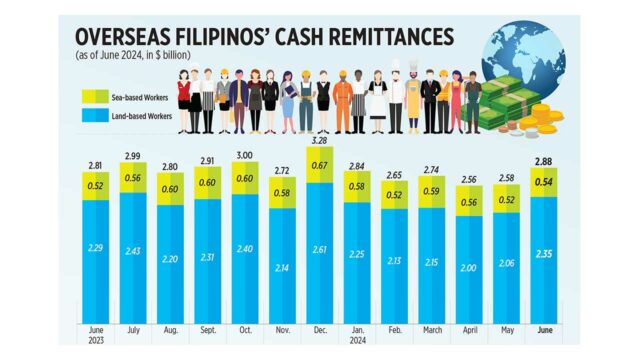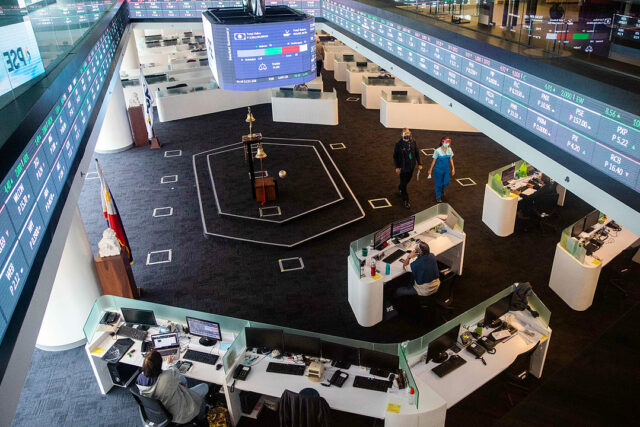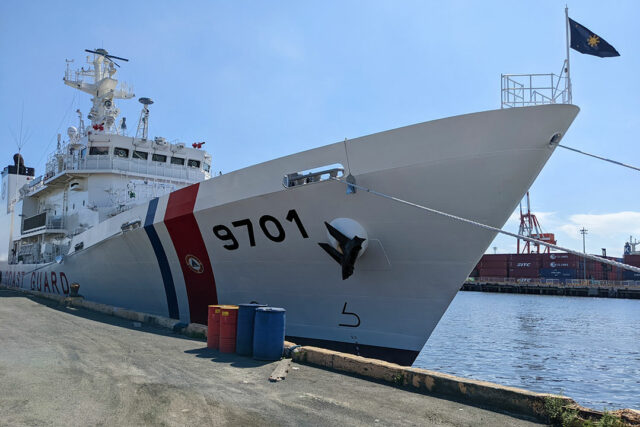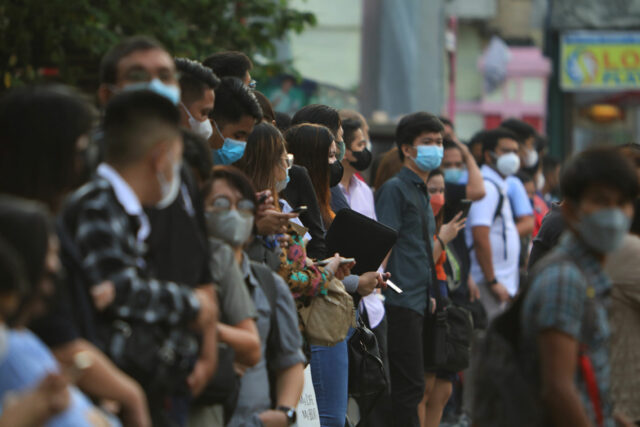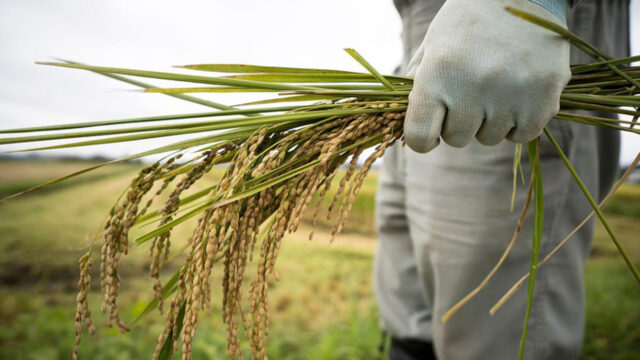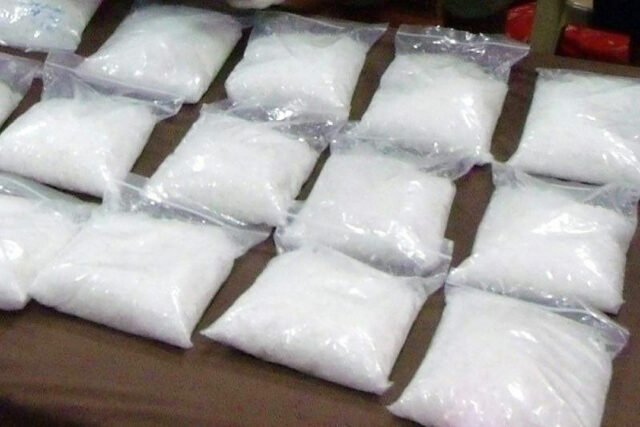THE PHILIPPINE Coast Guard (PCG) on Sunday said China is the only country in the region that continues to violate a 2002 declaration that sought to promote peaceful coexistence in the South China Sea.
This, after China urged its neighbor to withdraw a PCG vessel from Sabina Shoal, a Philippine feature to which Beijing has deployed naval assets in recent weeks.
“China should stop citing the 2002 Declaration on the Conduct of Parties in the South China Sea, as they have not honored or followed a single provision of that declaration,” PCG spokesman Jay Tristan Tarriela said in an X post.
“As far as the region is concerned, it is only Beijing that constantly violates this declaration,” he added, citing China’s deployment of large coast guard and maritime militia vessels there.
The Chinese Embassy in Manila did not immediately reply to a Viber message seeking comment.
Mr. Tarriela said China had sent naval assets to Sabina Shoal, which is part of the Spratly Islands and falls within the Philippines’ exclusive economic zone. It is 123.6 nautical miles from Palawan Island, which is facing the South China Sea.
“These actions undermine stability in these waters and contribute to escalating tensions.”
China last week filed a diplomatic protest against the “illegal anchoring” of Philippine Coast Guard vessel BRP Teresa Magbanua at the shoal, saying it “seriously infringes on China’s sovereignty.”
“China has protested to the Philippines through diplomatic channels and asked the Philippines to stop its infringement activities and withdraw the vessel at once,” Chinese foreign ministry spokesperson Lin Jian told a news briefing in Beijing last week.
He said BRP Teresa Magbanua had entered the lagoon of Sabina “without permission and has been there for a very long time.”
It was a violation of the Declaration on the Conduct of Parties in the South China Sea, she added, noting that Beijing was “closely monitoring the developments” and would undertake “resolute measures.”
China and the Association of Southeast Asian Nations (ASEAN) have yet to finalize a code of conduct in the disputed waterway decades after signing the nonbinding 2002 declaration, which calls on parties to “exercise self-restraint in the conduct of activities that would complicate or escalate disputes and affect peace and stability” at sea.
The 2002 document urges parties to refrain “from action of inhabiting on the presently uninhabited islands, reefs, shoals, cays and other features and to handle their differences in a constructive manner.”
On Thursday, Singaporean President Tharman Shanmugaratnam said in a joint statement with his Philippine counterpart delivered at the presidential palace in Manila that his country, which is a non-claimant state, upholds “the rights of all states to freedom of navigation and overflight.”
Singapore “strongly supported the peaceful resolution of disputes in accordance with international law including the 1982 United Nations Convention of the Law of the Sea (UNCLOS),” he said.
“That’s fundamental UNCLOS has to be the legal framework within which all the activities in the oceans and seas are carried out.”
The 97-meter multi-response vessel Teresa Magbanua was sent to the shoal after reports of small-scale Chinese reclamation activities there.
Mr. Tarriela said the ship was deployed there not to provoke or escalate tensions, but to “protect and safeguard our sovereign rights over these waters.” He added that it’s also monitoring “illegal poachers” who damage the marine environment.
The 97-meter Teresa Magbanua, a multirole response vessel, has been stationed at the shoal since mid-April.
The PCG on Aug. 13 said China had deployed a 135-meter coast guard vessel with hull number 5303 to the shoal to replace its largest coast guard ship known as “The Monster,” which was first spotted by the Philippine Navy in the area on July 3.
It said the vessel, which was registered by the Chinese government under the Western and Central Pacific Fisheries Commission, did not inspect Chinese maritime militia vessels that gathered within the shoal for compliance with fishery laws.
“Instead of conducting inspections, they interacted with the crew of the Chinese maritime militia as if they were familiar acquaintances, sharing meals together,” it said.
“It is evident that no formal boarding procedures were carried out by the China Coast Guard to question the Chinese maritime militia’s intentions, despite their prolonged presence without any signs of fishing,” it added.
Mr. Tarriela said this showed that the Chinese maritime militia is recognized by the Chinese Coast Guard (CCG) as an integral part of its maritime operations, “aiding in encroaching upon the exclusive economic zones of other countries throughout the South China Sea.”
“These state-subsidized maritime militia support the CCG and the People’s Liberation Army Navy in intimidating neighboring maritime states such as Vietnam, Malaysia, Indonesia and the Philippines,” he added.
The shoal has been used by the Philippine Navy as a staging area for the resupply missions to its outpost at Second Thomas Shoal, which is also within the country’s EEZ.
The US-based Asia Maritime Transparency Initiative (AMTI) in February said about 195 Chinese militia ships were present near disputed areas of the South China Sea including Philippine features on any given day last year, a 35% increase from a year earlier.
These were composed of professional militia that operate purpose-built vessels out of Hainan province, and the “Spratly Backbone Fleet,” which consists of commercial vessels subsidized to operate in disputed waters to support Chinese sovereignty claims, AMTI said.
Earlier this month, the Philippine Navy said Chinese research vessel Ke Xue San Hao, which is equipped with advanced technology designed for marine environment observation, was still near Sabina over a week after it left a major Chinese military outpost in the South China Sea.
Its zig-zag movement “indicates something else,” which is no longer an innocent passage, it said.
The Navy said it had spotted Ke Xue San Hao, 12 Chinese maritime militia vessels and one China Coast Guard ship at the shoal from July 30 to Aug. 4. — Kyle Aristophere T. Atienza



